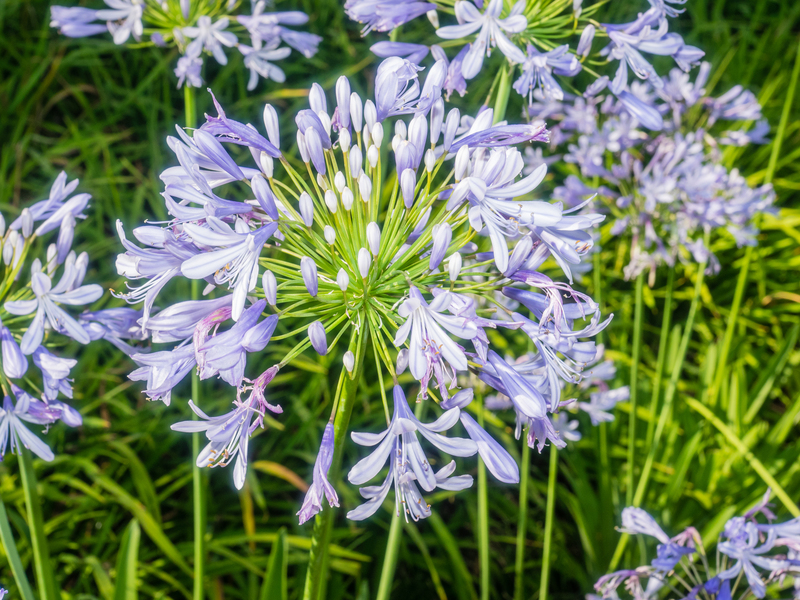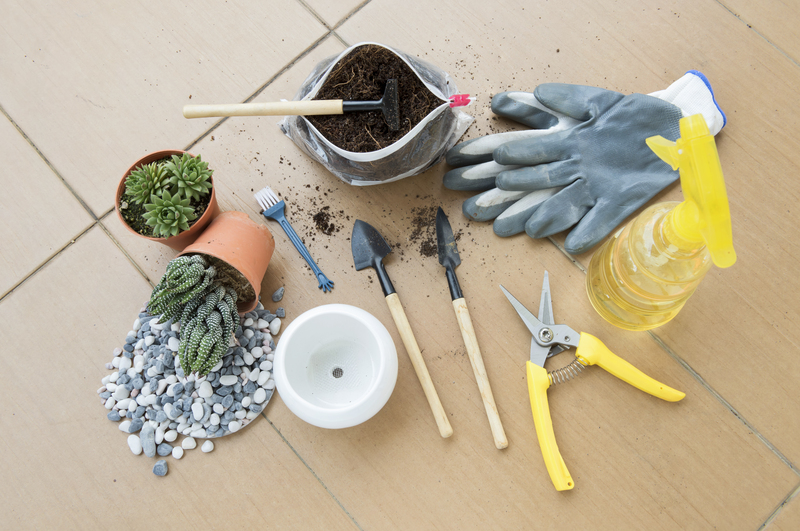Eco-Friendly Plant Choices for Sustainable Window Box Gardens
Are you dreaming of a lush, vibrant window box garden that's not only beautiful but kind to the planet? Eco-friendly window box gardens are a sustainable way to add greenery to urban spaces and reduce your environmental footprint. By making mindful plant selections, you can craft a thriving, sustainable window box garden that supports local ecosystems, conserves resources, and fills your window sills with color and life all season long!
Why Choose Eco-Friendly Plants for Your Window Box Garden?
Conventional gardening practices often rely on non-native plants, excessive watering, and chemical fertilizers. These methods can have significant negative impacts--both on local habitats and the environment at large. By selecting eco-conscious window box plants and using sustainable gardening techniques, you not only reduce waste and conservation needs but also create a haven for pollinators, beneficial insects, and birds.
Sustainable gardening emphasizes:
- Choosing native or well-adapted plants.
- Reducing water and fertilizer use.
- Minimizing chemical pesticides.
- Opting for organic soil and compost.
- Encouraging biodiversity.

The Benefits of Sustainable Window Box Gardening
Planting an eco-friendly window box garden rewards you in many ways:
- Environmental Conservation: Reduces water consumption and chemical runoff.
- Local Biodiversity Support: Provides habitat and food for bees, butterflies, and birds.
- Healthier Urban Spaces: Improves air quality and creates calming green vistas in cities.
- Low Maintenance: Eco-friendly plant choices often require less care and fewer resources.
Let's explore the best eco-friendly plant choices for window boxes to create a garden that both looks great and does good!
Characteristics of Sustainable Plants for Window Boxes
Not all plants are equal when it comes to sustainability. The most sustainable window box plants share several key characteristics:
- Drought-Tolerance: Plants that thrive on minimal water lower your overall usage, especially in sunny or exposed window boxes.
- Pest Resistance: Species less susceptible to pests and diseases require fewer interventions with chemicals.
- Native Adaptation: Local or regionally adapted plants support indigenous wildlife and thrive in your climate.
- Pollinator-Friendly: Flowers and herbs that attract bees and butterflies encourage biodiversity and support threatened pollinator populations.
- Non-Invasiveness: Choose plants that won't escape your window box and disrupt local ecosystems.
Top Eco-Friendly Plant Choices for Sustainable Window Boxes
To help you get started, here's a detailed guide to eco-friendly plants for window box gardens--from vibrant flowers to lush foliage and edible options.
1. Native Flowers
Plants that are native to your region are generally the most environmentally harmonious choices for window boxes because they require less water, adapt well to local pests, and provide essential resources for native pollinators.
- Coreopsis (Tickseed): Bright yellow blooms. Thrives in full sun, drought-tolerant, and loved by bees and butterflies.
- Black-Eyed Susan (Rudbeckia): Vivid golden-yellow petals. Hardy, pollinator-friendly, and low-maintenance.
- Penstemon: Trumpet-shaped blooms. Adaptable, supports hummingbirds and native bees.
- Wild Geranium (Geranium maculatum): Mauve-pink clusters. Shade tolerant and excellent for attracting beneficial insects.
2. Drought-Tolerant Succulents
Succulents are perfect for sunny, south-facing window sills and are celebrated for their low water requirements. Consider these beautiful options:
- Sempervivum (Hens and Chicks): Easy to grow, visually appealing rosettes, requires little maintenance.
- Sedum (Stonecrop): Many varieties with varying shapes and colors--ideal for a living tapestry effect.
- Delosperma (Ice Plant): Adds brilliant, daisy-like flowers and survives prolonged droughts.
3. Edible and Culinary Herbs
Many culinary herbs are well-suited for sustainable window boxes. They are compact, thrive in containers, and discourage pests with their aromatic foliage. Grow these for beauty and utility:
- Thyme: Perennial, drought-tolerant, and covered in small, pollinator-attracting flowers in spring.
- Oregano: Hardy, fragrant, and provides value in the kitchen and habitat for beneficial insects.
- Chives: Perennial, purple pom-pom flowers attract bees, while leaves are a tasty garnish.
- Parsley: Rich green fronds, biennial, home for swallowtail butterfly caterpillars, and delicious in many dishes.
4. Flowering Annuals with a Conscience
Some annuals are eco-friendly when grown organically and without peat-based compost. Consider:
- Calendula (Pot Marigold): Long flowering season, edible petals, beloved by pollinators.
- Borage: Silvery leaves and star-shaped blue flowers attract bees all season.
- Nasturtium: Vibrant blossoms and trailing habit, edible leaves and flowers, natural pest repellent.
5. Shade-Tolerant Greenery
For window boxes in partial shade, choose plants that bring interest and require minimal inputs:
- Heuchera (Coral Bells): Colorful foliage in shades of burgundy, lime, and chocolate, attracts pollinators.
- Ferns: Especially native varieties like Lady Fern, which support shade-loving insects and birds.
- Sweet Woodruff: Acts as a living mulch, fragrant leaves, and supports beneficial insects.
6. Ornamental Grasses
Many native ornamental grasses are highly sustainable due to their drought-resistance and suitability for containers:
- Blue Fescue (Festuca glauca): Compact, drought-tolerant, and provides contrasting texture.
- Prairie Dropseed (Sporobolus heterolepis): Native, graceful foliage and delicate flowers, attracting birds and butterflies.
How to Design a Sustainable Window Box Garden
Designing your eco-friendly window box is about more than just plant selection. Follow these tips to ensure your sustainable window box garden thrives while minimizing its ecological footprint:
- Prioritize native and drought-tolerant species.
- Layer plants for biodiversity: Combine flowers, herbs, and grasses for a rich ecosystem.
- Rotate edible and ornamental plants through the seasons to maximize habitat and productivity.
- Use peat-free organic compost to preserve global peatlands and build healthy soil.
- Avoid synthetic fertilizers and pesticides--opt for homemade organic feeds and natural pest deterrents like companion planting.
- Mulch with organic materials such as leaf mold, bark chips, or straw to conserve moisture and suppress weeds.
Companion Planting for Window Boxes
Companion planting is a sustainable strategy that places mutually beneficial plants together. For example:
- Nasturtiums deter aphids from herbs.
- Borage improves the growth of strawberries and attracts pollinators.
- Chives and parsley support each other and enhance pest resistance in mixed window boxes.
Using this technique, you can naturally boost your container garden's resilience and productivity!
Sustainable Care and Maintenance Practices
Keeping a green, eco-friendly window box garden thriving doesn't need to be labor intensive. Try these planet-friendly tips:
- Harvest rainwater for irrigation and water early in the morning to reduce evaporation.
- Feed organically using compost tea or homemade fertilizers from vegetable scraps.
- Deadhead flowers and prune herbs regularly to give plants energy to keep growing and blooming.
- Rotate crops (especially if growing edibles) to prevent diseases and optimize nutrient use.
Embracing low-input maintenance and integrated pest management strategies will keep your window garden healthy year-round.
Eco-Conscious Containers and Garden Accessories
Your choice of containers and accessories is just as important as the plants you select. For a truly eco-friendly window box garden:
- Opt for containers made of recycled or sustainable materials such as re-purposed wood, recycled plastic, or terracotta.
- Grow in modular window boxes that can be reused and adapted for seasonal displays.
- Install self-watering systems to minimize water waste.
- Use coconut coir or sheep wool liners instead of peat moss for moisture retention.

Frequently Asked Questions: Eco-Friendly Window Box Plants
What are the easiest sustainable plants to grow in window boxes?
Easy choices include succulents like sempervivum, herbs such as thyme and chives, and hardy natives like black-eyed Susan and coreopsis. These require minimal water, are pest-resistant, and adapt readily to container life.
Can I grow an eco-friendly window box in full shade?
Absolutely! Choose shade-loving natives like ferns, wild geranium, sweet woodruff, and heuchera. Also, some herbs such as parsley and mint tolerate partial shade.
How do I attract pollinators to my window box garden?
Select pollinator-friendly plants like calendula, borage, nasturtium, and native wildflowers. Avoid pesticides, and try to keep some flowers unharvested for bees and butterflies.
Conclusion: Growing Toward a Sustainable Future
Creating a sustainable window box garden is more than a decorative gesture--it's a powerful action for the environment. By choosing eco-friendly, native, and drought-tolerant plants; using peat-free compost; and tending your garden in eco-conscious ways, you'll contribute to a greener, more resilient world right outside your window. Begin your journey with these eco-friendly plant choices for window boxes and enjoy a stylish, sustainable, and wildlife-friendly display all year long!
Let your window be a window into a more sustainable future--one box at a time.